Peter MALONE
Buckley's Chance
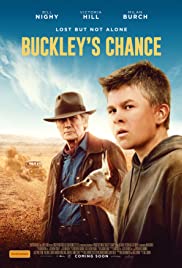
BUCKLEY'S CHANCE
Canada/Australia, 2021, 95 minutes, Colour.
Bill Nighy, Milan Burch, Victoria Hill, Martin Sacks, Julie Billington, Ben Wood, Kelton Pell, Anthony Gooley.
Directed by Tim Brown.
As they say, you’ve got Buckley’s chance (whatever, in fact, that may mean). Or a choice between Buckley’s and none. During this film, the very sympathetic indigenous character, (Kelton Pell) tells the youngster, Ridley (Milan Burch), the 19th century story of Buckley who disappeared and, seemingly miraculously, appeared again sometime later. So, Buckley’s Chance – and it is the name of the homestead where this story takes place.
In fact, this is a Canadian production with financial support from Screen Australia. Writer-director, Tim Brown, is Canadian. And the perspective is a focus on a young boy and his mother, living in New York, having to go to Australia to live with his grandfather on a spread somewhere out West. Local audiences will enjoy the film although there will be a few question marks, especially the discovery of a river out there in the deserts, a waterfall pouring into a large lake. (Perhaps viewers are thinking, if only…!)
So, this is a story of discovery, seen through the eyes of young teenager who has idolised his father who has been killed in an accident saving others. As it transpires, his father, Australian, grew up on the homestead, a talented football player who clashed with his father after his mother’s death, left home and went to America.
The boy, Ridley, is very much 21st-century, headphones, video camera, liking the comforts of the city, unprepared for the ruggedness of life on the homestead – which his grandfather very quickly demands of him, going out, camping, repairing fences. His mother, Gloria (a sympathetic Victoria Hill) tries to encourage her son. He is also encouraged by his grandfather’s foreman, Jules. But, for movie buffs, the intriguing aspect is that the Australian grandfather is played, of all people, by Bill Nighy, with an Australian accent, and without most of his familiar (and often engaging) tics.
Tim Brown must have seen and liked the Red Dog films because dogs are important here, especially a dingo (always under suspicion after the as Azariah Chamberlain case), running with his pack but becoming friendly with Ridley, sharing the harsh experience when Ridley (following two farm hands, rather dumb, with some nefarious schemes) gets lost in the desert and the community makes all efforts to find him – and the dingo.
So, a familiar enough story, quite pleasingly presented, location photography of the desert (and that river and falls), a sympathetic presentation of a country town and a boy coming to terms with the death of his father, relating to his grandfather, facing a new life.
- An Australian/North American story? Characters? Canadian production?
- Jules telling the Australian story about Buckley, his disappearance, his reappearance and the odds-on chance of his survival?
- The New York background, glimpses of the city? Flights to Australia? To the outback? The property, last, terrain, planes, hills, river and falls? The town, the diner, police? The musical score?
- Ridley’s story, age 13, his relationship with his father, the filmed encounters, the bond, his grief at his father’s death, expelled from schools, his mother desperate, travelling to Australia to his grandfather? Surly attitudes, not wanting to be there? His grandfather calling him Riddles? In the house, the support of his mother? Jules and his friendliness and explanations about the past? The four-wheeler, to go to school, riding, filming, the crash? His grandfather’s attitude towards the camera, eventually agreeing to speak to camera?
- Ridley going with his grandfather to work, early, mending fences…? Overhearing his grandfather and Jules talking about the situation? His grandfather not wanting the situation, but sense of obligation?
- The background to Spencer and his son, narrating the story, the son, football, getting out, his mother’s death, going to America, marriage? Giving his life for others?
- The town, the diner, Ridley and his being upset and running, Jules collecting him?
- The issue of the land, Spencer’s stubbornness? Mick and Oscar, comic villains, their plans, the shed, Ridley filming them, the police watching the video? Mick and Oscar seeing Ridley, on the other side of the river? Their confessing?
- Ridley, the encounter with the dingo, the dingo and his pack, symbol of Ridley and his family? Dingo following him, bonding, calling him Buckley? The trek, out in the bush, lost, leaving the camera behind? The threat of the dingoes? The river, the falls?
- The police, the gathering to find Ridley? His grandfather’s concern? The dingo, his mother finding him?
- The celebration together, Cooper and Spencer reconciling? Mother and son? Ridley and the screening of his film, Spencer and the images of his son? Ridley letting the dingo go to the pack?
Night House, The
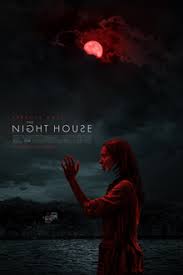
THE NIGHT HOUSE
US, 2020, 107 minutes, Colour.
Rebecca Hall, Sarah Goldberg, Vondie Curtis-Hall, Evan Jonigkeit, Stacey Martin.
Directed by David Bruckner.
With a title like The Night House, it is not a surprise that this is a film about haunting.
And, for audiences who like dramas about haunted houses (rather than gory thrillers), there is much to enjoy, much to mystify.
Rebecca Hall appears in every sequence. She is Beth, teacher, discovering that her husband of 15 years, Owen, has taken a boat out on the lake and shot himself. She is grieving, bewildered. But, she has a friend, Clare, Sarah Goldberg, who is very supportive. And there is the local old man, Mel, Blondie Curtis-Hall, who has been a friend of Beth and her husband for years.
But, here really, things do go bump in the night. Has Owen returned? There are suggestions of his presence. Radios go on, Gates to a jetty are open, mud footprints are seen. On the one hand, as Clare says, Beth is particularly rational and sceptical but she is caught up in the mysterious goings on in the house, even affecting her in vivid dreams, sleepwalking, dangers. At one stage, she explains to Clare that as a teenager, she had an accident, her heart stopping for four minutes, her having a near-death experience but experiencing – nothing. This also seems to be coming back to haunt her, in the suicide note left her by her husband..
And, of course, Owen had secrets. A creative architect, he has many designs for their house as well as a mysterious house being built in the woods. The books he bought from a local bookshop, as well as photos on Owen’s phone, lead to a young woman who works in the bookshop, who reveals some secrets about Owen, relationships, and the mysterious new house.
As the film goes on, more mysteries for Beth, more dreams, more hauntings, ultimately her sitting in the boat was a mysterious presence, with a gun…
Some explanations are offered but, after all the detailed close-ups and time with Beth, The Night House ends abruptly.
- The title? The family home? The building in progress and abandoned?
- The American setting, the woods and the water, the home and the interiors, the second home, school, bookshop? The musical score and atmosphere?
- The opening, Beth and her grief, funeral atmosphere? Alone in the house, looking at various mementos, photos…? Her going to school, the meeting with Clare, the student mother, aggressive, Beth revealing what it happened, the audience learning about Owen and his suicide? The mystery of his suicide?
- Clare, good friend, supportive, taking Beth out, meeting the friends, the discussions, Clare embarrassed, asking about the suicide, the revelation of the note, the mystery of its meaning, Beth later explaining, her accident in the past, heart stopping for four minutes, near death experience, experiencing nothing? Owen and his response?
- Beth at home, sounds, creaking, suggestions of people present, atmosphere of ghosts? The open gate, going down to the jetty, the mud footprints…? Beth asking the friends about believing in ghosts? Her sense of’ Owen’s presence? Human images, disappearing?
- Beth, the details of her nightmare, sleepwalking and Owen’s past, Owen and his involvement? Seeing him naked at the water? Later appearances? And the alternate presence, appearing like Owen, his revelation about being the presence during her near-death experience? Her having to acknowledge this, his coming back, taking possession of Owen?
- The mementos, Owen and his house designs, the book references, the reverse images? The photos on his phone? The lookalike in the bookshop? Beth looking at the books, the mystery, the decision to go to the bookshop, meeting Madelyn, the discussions, the relationship? Madelyn coming to the house, explaining she had been there before, the meetings with Owen, his approach, her going to the house in progress? The other photos on the phone, Beth lookalikes?
- Beth, the increasing haunting experiences, the increasing dreams, nightmarish?
- Mel, his friendship, contact over the years, meeting on the path, the discussions about the house, going to see him, his explanation of having to keep the secrets?
- The growing pressure on Beth, the mysterious man in Owen’s form, the discussions, her dreaming, being on the boat, his presence, the gun, the temptation to shoot herself?
- Clare coming, Mel arriving, their calling out to Beth, her recovering her consciousness? Saved? The film ending abruptly?
I am MLK Jr

I AM MLK Jr
US, 2018, 95 minutes, Colour/ black and white.
Directed by John Barbisan, Michael Harrison.
For all those interested in the life and non-violent aims for Civil Rights and the career of Martin Luther King, here is a 95 minute compendium. It can be viewed along with the fine documentary, King in the Wilderness, as well as the feature films, Boycott (2001) and Selma (2014).
The I am series has generally focused on film stars and media celebrities. This one is quite different although, of course, there is high admiration for Martin Luther King.
Always valuable is the amount of newsreel footage from the period as well as footage taken by friends. Which means then that we see sequences of the boycott in Montgomery, Alabama, a focus on the March on Washington, and, in dramatic climax, Martin Luther King coming to Memphis in support of sanitary workers and their desire for reunion, his final impassioned speech to them, seeming to indicate that he was resigned to being assassinated (something he had considered over the years), and the aftermath of his death, his funeral.
There are a great number of people being interviewed, those who were with him in his marches, like Jesse Jackson, quite a number of Civil Rights historians, some older, some younger. Interspersed are selections from quite a number of African-American songs and hymns, including Amazing Grace, some by individuals and requires.
The audience is reminded that at the time of the boycott in Montgomery, King was only 25. At his death he was 39.
There are glimpses of him with President Kennedy, with President Johnson, a contrast with the Alabama treatment of such law enforcers as the brutal Bull Connor, physical abuse of African-Americans, fire hoses, dogs, imprisonment for Martin Luther King and his writing a significant letter from the Birmingham jail.
The film outlines his campaigns and political career rather than his personal life. There are also speculations about his physical health, his mental health, depression, advice to seek psychiatric help, so close-ups of him looking depressed, the intensity and anguish of that final speech in Memphis.
As said, there are many more films to be watched, but this is a 95 minute compendium.
I am Chris Farley

I AM CHRIS FARLEY
US, 2015, 95 minutes, Colour.
Directed by Brent Hodge, Derik Murray.
Part of a series of television portraits under the title I Am… The films were mainly about film stars but included other celebrities. Sometimes it ranged more widely with a portrait of Martin Luther King Jr and Usain Bolt.
Chris Farley was dead at the age of 33. Short but big in size, his aim was to be an entertainer, and followed the route through Saturday Night Live (with creator Lorne Michaels one of the talking heads here). He teamed with David Spade as an odd couple with comedy routines and into films with Tommy Boy and Black Sheep. He also paired with Adam Sandler and appeared in some of his films in cameo roles. Both David Spade and Adam Sandler are interviewed.
There is some background to his family, especially with his brothers participating in this film, one doing stand-up routines, the others giving interviews, quite an amount of insight into the family and the growing up, the influence of their father. They are a Catholic family, Farley attending Catholic schools and some testimonies from a priest friend with whom he played football. Some of the commentators note that in private, he was concerned with visiting the poor, putting into practice some of his Catholic background.
However, interest in the film maybe were limited to an American audience, especially those who saw him on television, carrying on in interviews with David Letterman, his movies. He is probably not very well known outside the United States, especially as he died in 1997, sadly addicted to alcohol and drugs and spending many times in rehab..
The other difficulty for non-American audiences is whether they respond to his comic style. He is definitely a look-at-me presence, always performing, always carrying on, ditzy, tending to act the stupid role. And, while this might be an American style (and some comparisons are made with Jerry Lewis, Lou Costello), the broad comedy might not appeal to those outside the United States. Too much.
Rescue, The/ 2021

THE RESCUE
UK/US, 2021, 107 minutes, Colour.
Directed by Jimmy Chin, Elizabeth Chai Vasarhelyi.
This is the second film out of three going back to the rescue of the young football team and their coach, trapped in Thai caves in June-July 2018. The story commanded worldwide media attention at the time, the seeming sad fate of the boys and the seeming impossibility of rescue, the days of endurance in rescuing the boys, and worldwide rejoicing that everyone was saved.
The first film to appear, in 2019, came from Thailand itself, The Cave. It drew on a great deal of newsreel footage from the time, interviews with Thai authority figures, a focus on one of the divers from Ireland, Jim Warny bringing a touch of the personal story to English-speaking audiences. There were some emphases on the logistics in Thailand, especially the difficulties of getting pumps to the site, bureaucracy holding up the use of the pumps. Apart from Warny, there are glimpses of other international divers but little explanation.
By way of contrast the Rescue, while there is focus on the Thai situation and the Thai authorities, their hesitations, politicians, the Thai Navy Seals, the sad death of one of the Seals, the pumping out of the water, a great deal of attention is given to the international divers without whom the operation could not have been carried out.
This film is the work of husband-and-wife team, Jimmy Chin, Elizabeth Chai Vasarhelyu, who won an Oscar for their documentary on mountain climbing, Free Solo, and who have collaborated in a number of highly-awarded documentaries. Already, The Rescue has won a number of these awards.
With a longer running time than The Cave, the filmmakers are able to include a vast amount of documentary material from the cave site, within the cave, the rescue, the discussions between the Thai authorities and the divers, the crowds of people at the site, the many media journalists and their reports, and a focus on religious beliefs and Buddhist prayer (there was more more of this background in The Cave).
While there was great cooperation from many quarters in Thailand, and, especially from the United States, a number of American military being interviewed here, ultimately, it was experienced divers from Europe and Australia who brought the boys out.
The Rescue gives the opportunity for interviews with the key divers, British diver living in Thailand, Vernon Undsworth, got in contact with two British divers, Rick Stanton and John Volanthen, cave diving their hobby but with vast experience. It was they who found the boys. Quite some attention is given to the two men, their stories, their personalities, and extensive interviews with them throughout the film. Quite a number of other divers arrived from different countries, also interviewed for the film. The divers are giving their views and memories in retrospect, having had time to come to terms with what had happened. However, there are quite a number of sequences showing them in their work during the rescue period.
An important question was how to bring the boys out, through more than a kilometre and a half of floodwater, often underwater. An Australian surgeon, Richard Harris, was consulted about anaesthetising the boys. His initial opinion was that it could not be done. However, he continued to reflect, came to Thailand, organised the medication and the injections and how to administer them, and, because diving was his hobby, he went into the cave to the boys, coming out last. He is a genial personality and interviews well – and was named Australian of the year 2019. (He admired his father, stories about him and photos, only to find that as he came out of the cave, his father had just died.)
Many audiences may well be wondering how there are such close-ups of the divers in the cave, with the boys, the injections, the boys underwater – with the final credits giving information the some of these scenes were re-enacted by the participants. These re-enactments certainly bring the action to vivid and suspenseful life.
In 2022, Ron Howard’s a drama of the rescue, Thirteen Lives, with Colin Farrell as Rick Stanton, Viggo Mortensen as John Volanthen, Joel Edgerton as Richard Harris, is scheduled for release.
@Zola
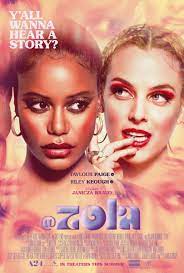
US, 2020, 86 minutes, Colour.
Taylour Paige, Riley Keough, Nasir Rahim, Colman Domingo, Nicholas Braun.
Directed by Janicza Bravo.
Not an easy film to review for a wide audience. Probably best to find out what the themes and storyline are before buying a ticket or downloading.
|
The film is based on a series of tweets by an American stripper, A’Ziah King, during a trip to Florida in 2015. The story was taken up by David Kushner in Zola Tells All: The Real Story Behind the Greatest Stripper Saga Ever Tweeted". And that’s the story this film tells – but more… We are introduced to Zola, played by Taylour Paige, who befriends Stefanie, Riley Keough, who persuades her to come on the stripper trip. In the film, Zola is quite a puzzling character, sometimes highly intelligent, thoughtful and observant, at other times quite ditzy, seemingly helpless. And, it is something the same with Stefanie, though intelligence is not her forte. She is prepared to be used. And, while there is some stripping during the trip, it is really a story about prostitutes, detailed sequences with clients, shrewd marketing online, a range of clients willing to pay. But, with the women, is their pimp, obnoxious to them and certainly obnoxious to the audience, violent, misogynistic, no advertisement for the profession of pimp. Also on the trio is Stephanie’s gangly boyfriend, Derrek, at one point his own acknowledging that he is rather stupid, on the outer, then befriending some locals who turn out to be violent thugs. |
|
|
Some audiences have found the film a hoot, rather funny. While on the other hand, some have found the themes and the treatment of the women quite serious. So,@Zola, and whether you would like to see it or bypass. |
|
Congratulations, Heart Of Life Graduates, Siloam and Spiritual Leaders 2021
Congratulations, Heart Of Life Graduates, Siloam and Spiritual Leaders 2021

Happily, with Victorian lockdown restrictions lifted, we were able to gather at the Centre in Malvern for a Graduation ceremony, though some were present via Zoom.

And Zoom
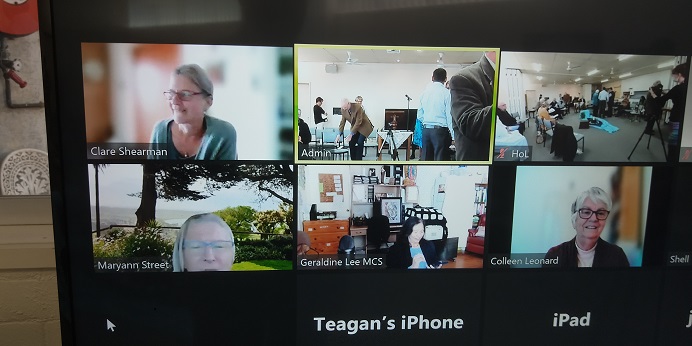
9 graduated from the Siloam program and 8 Spiritual Leaders.
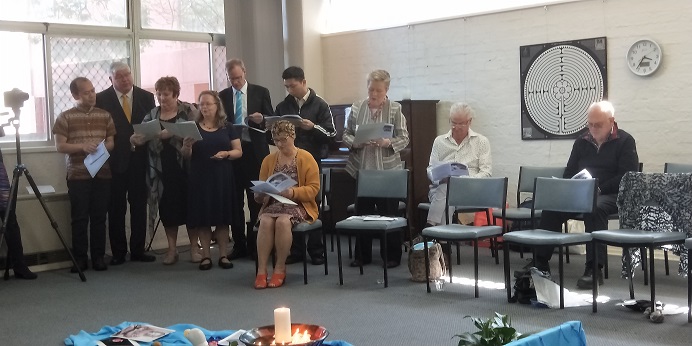
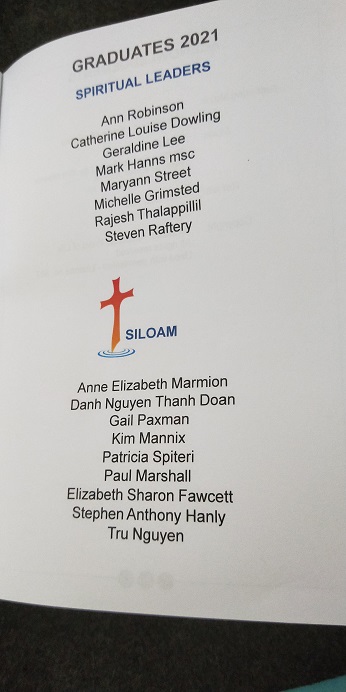
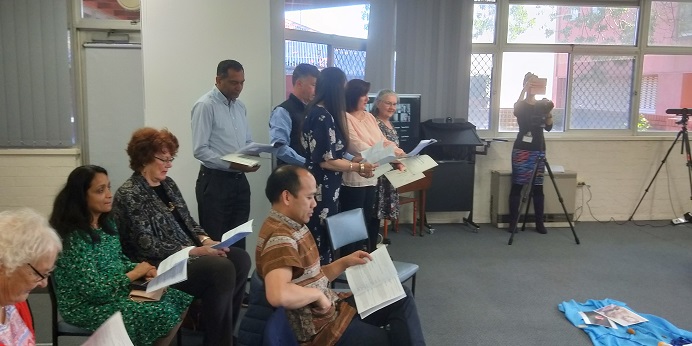
Retiring director (since 2014), Paul Beirne, welcomed everyone.
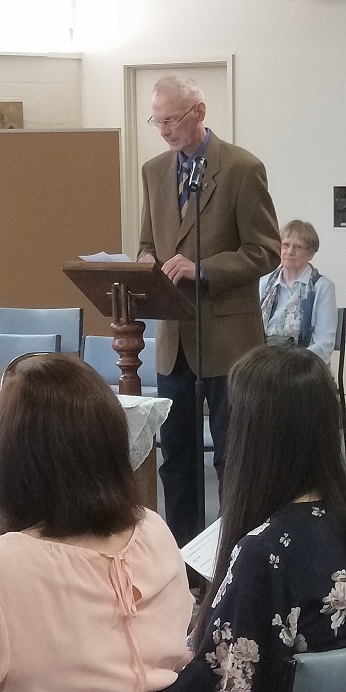
Staff member, Jeff Hood, was MC for the occasion.
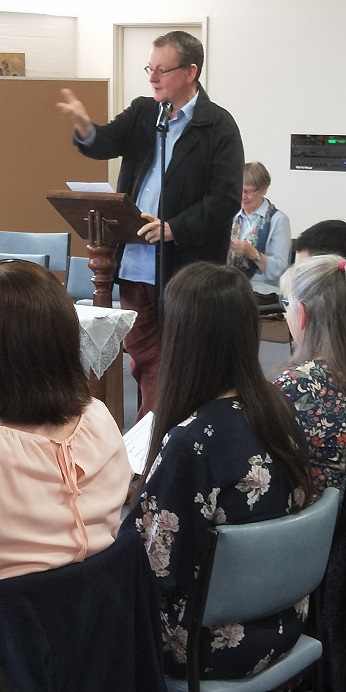
Jeff
After quiet music reflection, there was a dramatized reading of John’s Gospel of the Man Born Blind.
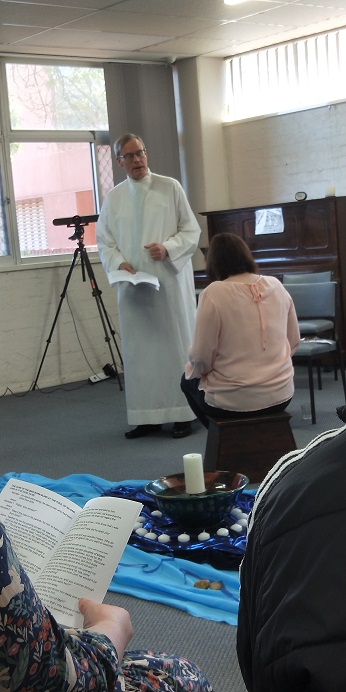
In the centre of the room was a design to represent the Pool of Siloam.

Each Graduate spoke to a symbol they had chosen to encapsulate their year’s experience, placed it on the pool and lit a candle. Some of those present showed the symbols for the Zoom graduates – who were able to explain their symbols from the screen.
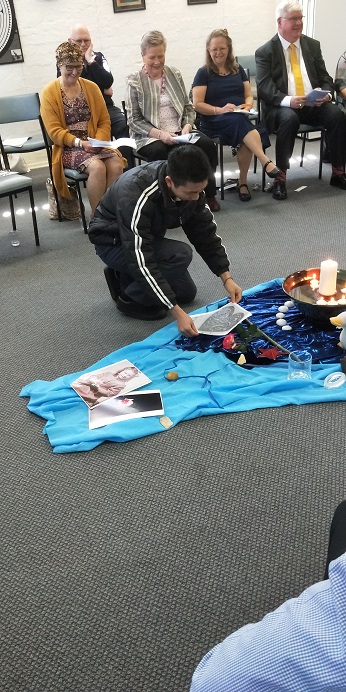

Paul Beirne and the directors of the programs then presented the graduates with their certificates.
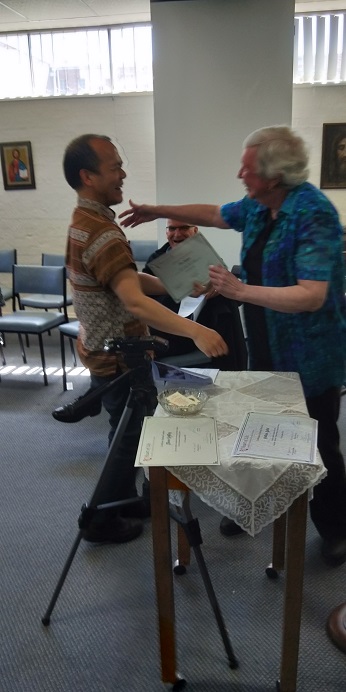
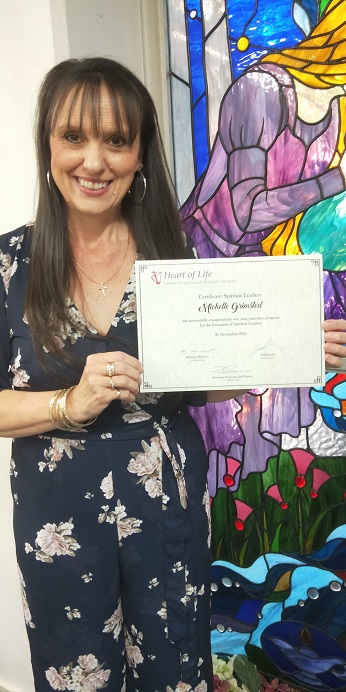
Prayers and blessings followed. Provincial Superior, Chris McPhee spoke of the importance of Heart of Life and how the Siloam and Spiritual Leaders Programs are important and significant for the future and gave a final blessings.
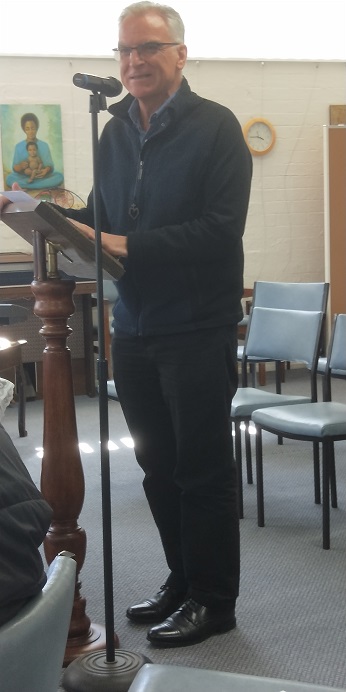
And, again happily, refreshments followed.
We wish Danh well for his return to Vietnam,

Tru for his appointment at St Mary’s Towers.

Mark Hanns, our formation director, who was part of the Siloam Program, 2002, this year was a member of the Spiritual Leaders.

In Celebrating 200 years of Catholic Education in Australia, Chevalier College reflects on the contribution of the Missionaries of the Sacred Heart (MSC).
In Celebrating 200 years of Catholic Education in Australia, Chevalier College reflects on the contribution of the Missionaries of the Sacred Heart (MSC).
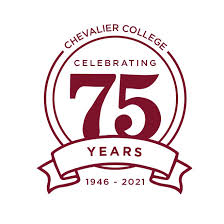
John Mulrooney MSC writes:
The Missionaries of the Sacred Heart arrived in Australia in the latter years of the 1800s and began consolidating ministry in parishes, parish missions, and ministry in remote Aboriginal communities in the north of Australia.
There was little thought to be involved in education.
In order to secure the future and meet the needs of many young men expressing interest in becoming MSCs, an Apostolic School was established at Douglas Park, New South Wales in 1916. This was a secondary school, and with only 100 students maximum, it achieved significant results in external exams. Many ‘older men’ who wanted to be MSC had to spend some years at the school becoming proficient in Latin before they could begin their theological training. (The school closed in 1966.)
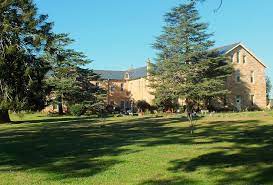
St Mary’s Towers, Apostolic School
In 1929, a new Diocese was established in Toowoomba. The then Bishop wanted a Catholic boarding school established to meet the needs of the boys in western Queensland. He approached the MSC and, after some ongoing ‘discussions’ with the MSC’s Administration in Rome, ‘Downlands College’ was established in 1931. In 1971, the school accepted day students for the first time, and co-education was established for the senior years with St Ursula’s College. This arrangement was discontinued by St Ursula’s in 1992, but Downlands began a new chapter of their history by accepting girl boarders to the college.
With some success in Toowoomba, the MSC were ready to consider requests to open other schools. A request came from the Parish Priest of Mittagong to establish a Catholic school for boys in the district, as there was no such school between Campbelltown and Goulburn. The Parish Priest and the Archbishop of Sydney approached the MSC and, in 1943, they agreed. The war made purchasing property a challenge but, once a suitable property was secured, ‘Chevalier College’ opened in Bowral in 1946. Following a similar pattern to Downlands, the college introduced girl students from a local girl’s school in the 1970s – becoming fully coeducational by 1976.
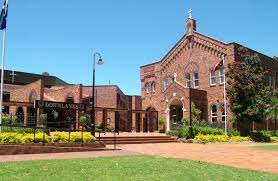
Downlands College
On the Feast of the Sacred Heart held at Chevalier College on Friday 11 June 2021, the community celebrated with 200 invited guests for the 75th anniversary of the college.

Chevalier College
The next request came from the Bishop of Ballarat, Victoria. There was a huge demand for boarding places for boys in the western districts of Victoria brought on by the land settlement program after the war. The Bishop decided the school would be in Hamilton and the MSC settled on a property in 1948. Sadly, this property was too far from town and it was not connected to electricity, town water or sewage. A deal was made with a local businessman for the purchase of land closer to town. Classes began at the original property in 1954 – moving to the new site in 1956. The school was named ‘Monivae College’ and, like the other MSC schools, went co-ed in the 1970s.

Monivae College
The next request came from the Archbishop of Canberra for a boy’s school. The need for this was urgent and land had been set aside by the ACT Government. ‘Daramalan College’ was established in 1962. Co-education was introduced for the senior years in 1977 and the college has since become fully co-educational.

Daramalan College
A special feature of Daramalan College has been its care for students with learning difficulties.
Downlands, Chevalier, Daramalan and Monivae Colleges are all independent schools – owned by the Missionaries of the Sacred Heart.
In 1960, the Bishop of Darwin (who was an MSC) built a school for boys and one for girls on lands owned by the Diocese. He contracted the MSC to run the schools. The MSC administered them until 1998. After Cyclone Tracy, the two schools merged as one and became known as St John’s College, Darwin. It is now administered by the Catholic Education Office.

St John’s College
In the early days of MSC schools, it was hoped that they would bring forth young men who wanted to become Missionaries of the Sacred Heart priests and brothers. Also ensuring the formation of well-educated young Catholic men.
The founder of the MSC, Fr Jules Chevalier wrote:
“They (MSC) should be tireless in teaching their students whatever is needed for them to gain academic results with distinction. And they should never forget that the first task required of them is that their students become ‘Fortes in Fide’ (Strong in Faith) dedicated with great love to the practice of Christian virtues.”

Fortes in Fide
With the advent in the 1970s of ‘new language’ to express the meaning of ‘Devotion to the Sacred Heart’ – in MSC schools we form our students in a ‘spirituality of the heart’. Our hopes and goals are to form young men and women with hearts of compassion, love and kindness – so they understand that they can be the heart of God on earth through who they are and how they relate with those around them.
Fr John Mulrooney
Chaplain – Chevalier College
June Again

JUNE AGAIN
Australia, 2020, 99 minutes, Colour.
Noni Hazlehurst, Claudia Karvan, Stephen Curry, Nash Edgerton, Pip Edwards, Darren Glishenan, Wayne Blair, Otis Dhanji, Brendan Donoghue,
Directed by JJ Winlove.
Already in 2020-2021, we have seen the high-profile, Oscar-winning The Father, with Anthony Hopkins experiencing dementia, the film inviting audiences to share his bewilderment and bewildering experience. Then there was a British film, Supernova, story of two gay men, one a carer, the other realising he was slipping into dementia. And now an Australian experience of dementia, the dementia of June, and her temporary recovery where she becomes June again.
The beginning of the film is full of pathos. Noni Hazlehurst, such a strong presence in Australian film and television for so many decades, is discovered in an institution, has been there for five years, living a bewildered life, supervised, urged to participate in activities, some visits from her sympathetic family but her not recognising them. But, she has an underlying shrewdness. We’re not exactly sure what happens to her, but she recovers her awareness of herself, as if she had returned to the moment when she collapsed into the dementia. She gets out. She gets a taxi. She goes to her home – only to find another family living there.
The main part of this story is June becoming herself again. And there is a real emotional problem. Do we really like this June?
Boy oh boy! Has she been a tough lady! Once recovered, taking some time to get used to the fact that five years have passed, we realise that her old self was quite a dominating and domineering matriarch. She had high expectations of her daughter, Claudia Karvan, married but tangled with some financial inadequacies of her husband (and two sons whose eyes and noses are continually buried in their phones – sigh of relief and applause when, finally, their mother shocks them by forbidding them their phones!). June had been manufacturing quality wallpapers with special stylised design. But, the factory has fallen on hard times, shocking June, but not stopping her intervening and interfering.
Worse has been her domination of her son, Stephen Curry. She discovers that he has not lived up to expectations at all, abandoning his legal studies, an unsteady job, divorced from his wife, whom June definitely approves of, love for his son, but a secret that needs to be surfaced.
And, the children have got rid of her stuff at a garage sale! There is a table that has fond memories and so she goes to get it back. Which leads to some revelations, some deeper parts of her past (and some flashbacks).
Where can it end? Some hope for her children and their families? Some reconciliation between brother and sister? And can this again period of June’s life be sustained? Does dementia eventually dominate?
- Australian story? Universal story? Ageing, dementia, family relationships, possibilities for redemption and reconciliation?
- The Sydney settings, the home for the aged, suburban homes and streets, interiors, the factory? The visit to the countryside? The musical score?
- The title, the focus on June, her story? The initial impact, Noni Hazlehurst’s presence, age, her room, clothes, bewilderment, the treatment by the staff, by herself, with the others, the singing songs? The visits from the family? The revelation of her stroke 5 years earlier?
- The change, the physiological change, consciousness, recovery? Her reaction, impatience, the revelation of her domination style? The past and her getting the code for the door, the guard and his carelessness, her escape, getting the taxi?
- Audience response to this kind of experience, the sudden recovery, bewilderment, the discovery of the lost years, discovery of what had happened, especially to family?
- June, taking initiatives, going to the house, Olive helping her, realising the house had been sold, the flashbacks to memories, getting the clothes?
- Ginny, coming to get her mother, the visits to the aged care home? Her husband, the revelation about financial deals, the clash with Devon, the plan to repay? The children, phone obsessed? Her reaction to her mother, having missed her, yet the later comments about her mother putting her down? Driving her mother? Taking her to see Devon?
- Devon, his mother’s ambitions, architect, the revelation that he had topped one course, her pressure? His marriage and June’s phoning his wife, discovering the divorce? His son? Working the photocopying the shop? His awkward manner, his boss and her criticisms, dismissing her? The tensions with his mother?
- June, taking initiative, going to the factory, the shock at the deterioration, the friends, playing the taxi, discovering so many gone, the introduction to David, the conversation, his manner, the revelation of the truth? Her later returning, doing the work, Ginny helping her? Ginny and the plan with the plates and the designs, her mother dismissing them? Her mother later ringing the agent, seeing the plates and their extent, changing her mind? Ginny setting the price, and her self-assertion?
- Going to the house, the drawings on the table, scratches? The missing sideboard? Devon and selling it on eBay? The address?
- June deciding to recover the sideboard, taking the car, leaving the note, driving into the countryside, indications of decline, her stopping by the water, Ginny and Devon following, finding her, the car and the mud, getting it out? Going to the house? Discovering the sideboard? All her books and photos? The garage sale? The revelation of Dan? His buying all her things? Jinny and Devon and the frank talk about their father, gay, the mother’s relationship with Dan? Her flashback memories?
- Her organising the meal, everybody turning up, the boys forbidden their phones, Devon and his gradual mellowing, his ex-wife, his son, Kyle and the embarrassment about the financial situation?
- Devon, the accident with his son, not expressing it, their talking and embrace?
- The awkwardness of the meal, June and the issue of tomato sauce, overhearing the comments, yet breaking down at the meal, then eating the meal eagerly? The gradual bewilderment taking over again?
- June back at the home, the realisation for the audience that the handyman was Dan, his continued devotion to her?
- The visit of the family, the support?
- An effective reminder of growing old, senility, dementia, the consequences, and for the family?
Nutty Professor II, The Klumps, The
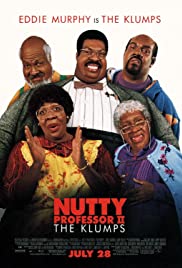
THE NUTTY PROFESSOR II: THE KLUMPS
US, 2000, 106 minutes, Colour.
Eddie Murphy, Janet Jackson, Larry Miller.
Directed by Peter Segal.
The Nutty Professor, 1996, had a lot of laughs but it is not in the genre of elegant comedy. Over 30 years before Jerry Lewis made the original a star vehicle for himself and a means to be taken seriously as a comedian. He used his gawky screen persona but, by using the story of Dr Jekyll and Mr Hyde, he updated the change so that a suave Jerry Lewis emerged - with the ominous name of Buddy Love.
Now Eddie Murphy has taken over. But, instead of having a `nerdish' professor, we have a very fat professor as the Dr Jekyll equivalent. Mr Hyde becomes Buddy Love again, but he is not suave, he is a completely egotistical variation on Eddie Murphy as we know him from his movies! Who is the real Eddie Murphy?
This Nutty Professor was especially geared, as are so many of Eddie Murphy's movies, to a Black American sensibility. It was a success at the box office and so a sequel which was well received by friends. This kind of comedy does not travel so well (as in the family dinner scenes where Murphy plays the part of other members of his family, including grandma). Audiences who don't find bodily function humour funny should also be warned.
But, as in the first film, the sympathetic way in which Murphy (and his complex makeup) portrays the professor, who is so self-conscious and awkward and whose subconscious surfaces in Buddy Love, creates a humane character and shows Murphy's skills in character acting. He is extraordinarily versatile.
The plot, science experimentation again, trying to find a potion to make creatures younger, is the framework, plus Sherman Klump’s wooing of Janet Jackson, and his conflict with his university boss, played with his usual sardonic humour by Larry Miller.
While there are a number of writers credited, including the Weitz brothers, they don’t seem to be necessary. Rather, Murphy, doing even more characters in the family, plays it like stand-up comedy routines – routines with a little plot around them.
For the next twenty years, Eddie Murphy had quite a lot of lower points in his career, but an Oscar nomination for Dreamgirls and acclaim for My Name is Dolemite.


